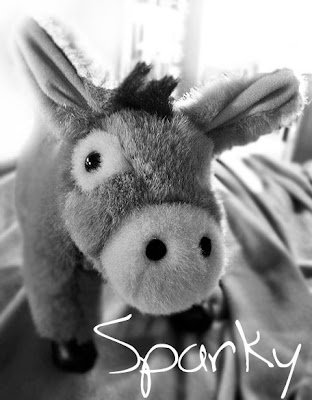 |
| A gluten-free beef stew recipe to warm your bones. |
This recipe is a surprise- even to me. Beef stew? You wouldn't expect a Vegetarian Goddess to create and fall in love with a beef stew recipe, but that is precisely what happened this weekend. Shocking?
Tell me about it.
Tell me about it.
Just when you think you've got your life all figured out, and your tastes and preferences arranged in a tidy packet of self-identification and veggie piety- all Hades breaks loose. Celiac. Food allergies. Broken hip.
Suddenly, your food-world view is quite literally flipped on its leafy little head. No whole wheat pasta or legumes for protein. No soy. No more savory white bean ragout, and- worst of all- no peanut butter, which means no more African Sweet Potato & Bean Soup.
So, after my orthopedic surgeon's instructions to "eat lots of animal protein" to support the healing of my hip fracture, my husband and I decided to try our collective hands at making our very first beef stew.
The first beef stew of our marriage.
And what did I do as I spooned the first taste into my nervous, quivering mouth? Gentle Reader, I swooned like a virgin in a bodice ripper. I sighed. I slurped. Oh my! I murmured through one spoonful after another.
Wow, said my partner in crime as he smacked his lips, This is mighty damn tasty.
Continue reading

 * Grind this material in mixer with adding minimum water.
* Grind this material in mixer with adding minimum water. * Make a smooth batter and add salt. The final batter should not be too thick or too watery.
* Make a smooth batter and add salt. The final batter should not be too thick or too watery. 
 Preparation:
Preparation: Step 3: Cool for about 10-12 minutes. Let stand for 1 minute and unmould.
Step 3: Cool for about 10-12 minutes. Let stand for 1 minute and unmould. Step 4: Serve hot with chutney of your choice and sambhar.
Step 4: Serve hot with chutney of your choice and sambhar.

 Step 2: Grind them together in a grinder.
Step 2: Grind them together in a grinder. Step 3: Make smooth powder. If you made more than you required than you store it in an air-tight container and use it when required. I was always made fresh smabhar masala for nice aroma.
Step 3: Make smooth powder. If you made more than you required than you store it in an air-tight container and use it when required. I was always made fresh smabhar masala for nice aroma.

 Step 2: Boil the vegetables and add salt to taste.
Step 2: Boil the vegetables and add salt to taste. Step 4: Heat the oil in another pan and crackle mustard seeds. Then add cumin seeds and a pinch of hing.
Step 4: Heat the oil in another pan and crackle mustard seeds. Then add cumin seeds and a pinch of hing. Step 5: Add finely chopped onion in it and fry for few minutes.
Step 5: Add finely chopped onion in it and fry for few minutes. Step 6: Now add the vegetables in it and cook for one minute.
Step 6: Now add the vegetables in it and cook for one minute. Step 7: Pour the tuvar dal and add turmeric powder, red chilli powder in it.
Step 7: Pour the tuvar dal and add turmeric powder, red chilli powder in it. Step 8: Add sambhar masala and simmer over medium flame for 15 minutes.
Step 8: Add sambhar masala and simmer over medium flame for 15 minutes. Step 9: Turn off the flame and garnish with coriander leaves. Serve hot with Idli and dosa.
Step 9: Turn off the flame and garnish with coriander leaves. Serve hot with Idli and dosa.


 Step 3: When dal turns slightly brownish, add curry leaves. Fry for a little while. Pour this seasoning over chutney.
Step 3: When dal turns slightly brownish, add curry leaves. Fry for a little while. Pour this seasoning over chutney.
















 'Navratri' to Goddess Ambica, where women dance gracefully in circles sometimes also using, 'Bedu, Kanjari' or just 'Taali' and 'Chapti'. The word Garba is derived from the word Garba Deep meaning a lamp inside a perforated earthen pot. The light inside the perforated earthen pot symbolized the embryonic life. In this folk dance, ladies place the pot with
'Navratri' to Goddess Ambica, where women dance gracefully in circles sometimes also using, 'Bedu, Kanjari' or just 'Taali' and 'Chapti'. The word Garba is derived from the word Garba Deep meaning a lamp inside a perforated earthen pot. The light inside the perforated earthen pot symbolized the embryonic life. In this folk dance, ladies place the pot with  the lamp on their heads and move in circles, singing in time measure by clapping their palms or snapping their fingers, to the accompaniment of folk instruments. Formerly associated with the legend of Krishna, Garba is now a regular feature during the Navratri puja (nine nights in honor and worship of the goddess Durga)
the lamp on their heads and move in circles, singing in time measure by clapping their palms or snapping their fingers, to the accompaniment of folk instruments. Formerly associated with the legend of Krishna, Garba is now a regular feature during the Navratri puja (nine nights in honor and worship of the goddess Durga)



